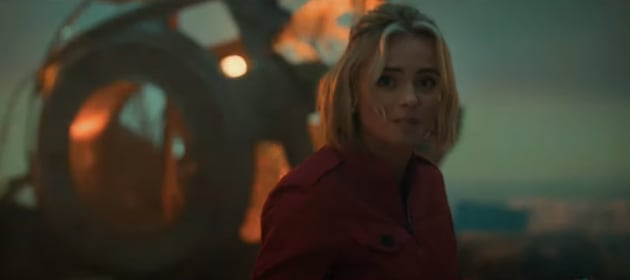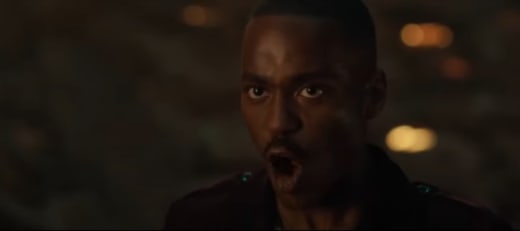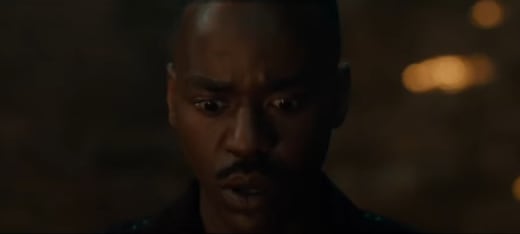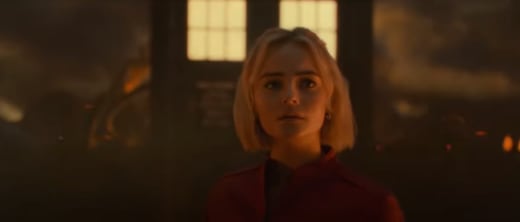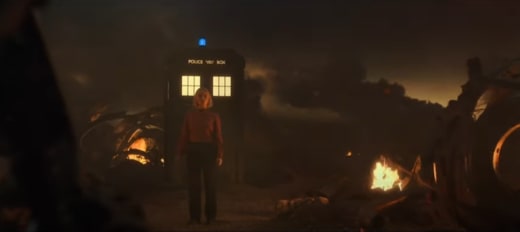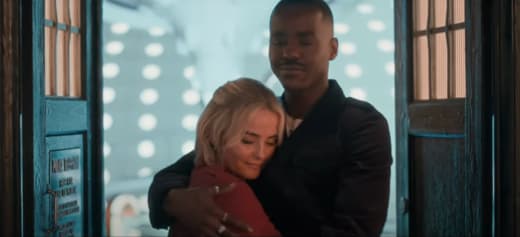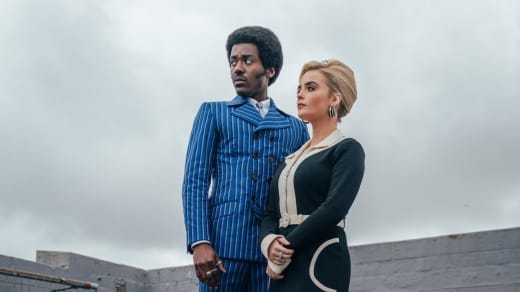A desolate planet at war for no apparent reason. Algorithms that decide who lives or dies. Landmines that turn their victims into weapons of mass destruction.
Doctor Who Season 1 Episode 3 took a decidedly darker tone, putting to rest fears that the series had become childish, lighthearted fare after Disney+ agreed to stream it worldwide.
This story had some Twilight Zone-like elements, which was unsurprising considering that it was written by Steven Moffat, known for writing scarier, more horror-inspired content than other Doctor Who writers. Still, did he set up a brilliant story only to mess up the ending?
A Planet at War With… Who Exactly?
I figured out the twist that the inhabitants were at war for no reason fairly early on.
More fog. Maybe the Kastorians are made of fog. That’s why we never see them.
Carson
The fact that the soldiers had never seen their enemies gave it away. It seemed likely they were fighting ghosts that only existed in their mind — something which is a quintessential Doctor Who idea, but wasn’t much of a plot twist.
That was okay because the enemy’s identity wasn’t the point. This story played upon current fears about artificial intelligence and the way greed leads to wars.
The messaging wasn’t subtle, but that’s Doctor Who for you.
This show has never tried to hide its social justice messaging.
1970’s “Inferno” was unapologetically about environmental concerns, while 1975’s “Genesis of the Daleks” was a clear Nazi allegory, with the Kaleds imitating the Nazi salute before being transformed into killing machines that wanted to exterminate all inferior beings.
Those viewers who think Doctor Who has gone “too woke” probably didn’t like the clear anti-capitalism message here either, but this is not something that has only happened recently — as the above examples demonstrate, Doctor Who has been like this since forever.
It wasn’t entirely clear to me how the algorithm killing the perfect number of people kept people buying items unless the Doctor meant the sale of weapons and protective devices against their invisible enemies. The message was strong, nevertheless, but it felt like a dot had been left unconnected.
The Doctor’s Landmine Dilemma
The landmine dilemma was compelling, at least at the beginning.
The Doctor needed a counterbalance to put his foot down, but why couldn’t he step off the landmine entirely once he’d done that? If the landmine needed its target’s DNA to create the explosion, wouldn’t getting off it before it finished its analysis prevent it from being able to explode?
I would have preferred the Doctor had gotten off the landmine altogether after Ruby had used the urn to help him, and then the two could have gone on with a more typical adventure.
The idea of a “smart landmine” that gauges whether its target is viable and then uses the target’s DNA to generate an explosion was compelling, but the Doctor’s inability to get off it became a tired TV trope after a while since there was no real explanation for why he had to stand there.
Nevertheless, the whole sequence where Ruby got shot and was presumably dying was effective if you suspended disbelief about the Doctor’s inability to move off the landmine.
He couldn’t do anything to help save her except send a hologram into the algorithm and hope to change it. During this episode, the Doctor was at his most powerless. The only thing he had was his mind, which wasn’t enough to save Ruby, or so it seemed.
A Weird Clue About Ruby
This entire season so far has revolved around Ruby’s true identity. This is a compelling story that Millie Gibson is handling well.
The Ambulance identified her as human this time, so one theory about her origin has gone out the window. But it couldn’t identify her next of kin.
Ruby’s origin has something to do with a non-human since the algorithm can only identify human DNA — but why did she register as human?
There was another, more subtle clue… maybe.
The Ambulance said that Ruby was 3,086 calendar years old, which is far longer than human beings survive, but is young for a Time Lord, perhaps not even out of puberty yet.
Where did that number come from? The algorithm could have calculated the difference between Ruby’s birth year and whatever year this was supposed to be, making this a red herring. But could Ruby actually be that old?
The snow from the day of her birth also keeps appearing, especially when Ruby is injured, but it’s not clear what that means — is that a manifestation of the power of whoever abandoned her at the church?
Susan Twist Had Her Biggest Role Yet
As sharp-eyed fans have noticed, Susan Twist has had bit parts in every episode of Doctor Who Season 1l. This time, she had a much bigger part.
She was the voice of the Ambulance, responsible for making life-and-death decisions and fighting with Vader’s hologram for control of the software. She originally wanted Ruby to die because she was a non-believer, but after Vader took over, love won out, and she renewed her.
This doesn’t feel like a coincidence, especially considering Twist’s other roles in the new season of Doctor Who. The next-time trailer suggests that she will play an even bigger role as Ruby confronts a woman who has been following her.
Hopefully, we’ll get some answers soon because I’m at a total loss as to what Twist’s inclusion in every episode has to do with anything.
A Tense Climax, But What Was That Ending?
The climactic sequence was one of the best Doctor Who has offered recently.
It included the landmine about to go off, Splice and Mundy refusing to run away, the Doctor trapped on the device, and Ruby apparently dead… all while the group was surrounded by Ambulances ready to exterminate everybody for the sake of the war.
But then Vader took over the Ambulances, the landmine turned off, and everyone was saved.
That was a huge disappointment. All that buildup led to… nothing happening. Nothing changed because the Doctor or any of the other characters did anything — Vader magically reasserted control after the algorithm supposedly deleted him from its system.
The Doctor: Dying defines us. Snow isn’t snow til it falls.
Ruby: Snows.
The Doctor: It all melts away in the end, but something stays. Maybe the best part.
Afterward, the Doctor made strange philosophical comments about everyone being mortal, praised Splice for her faith that her dad’s spirit was still there despite his own lack of belief, and rushed Ruby off to the next adventure.
It was a strange ending that felt like a letdown after an otherwise solid episode.
Stray Thoughts
- There were some genuinely funny bits of dialogue. I especially liked the Doctor saying that if Mundy married Ruby, her name would be Mundy Sunday.
- The Doctor still likes fish fingers and custard! Nice throwback to the Matt Smith era.
- I couldn’t help wondering if we’ll cross paths with a grown-up Splice some other time, especially after the Doctor’s comment that she’ll grow up to be president of something.
Your turn, Doctor Who fanatics. What did you think of this episode?
Hit the big, blue SHOW COMMENTS button and let us know.
Doctor Who Season 1 streams on Disney+. New episodes drop on Fridays at 7/6c.
Jack Ori is a senior staff writer for TV Fanatic. His debut young adult novel, Reinventing Hannah, is available on Amazon. Follow him on X.
